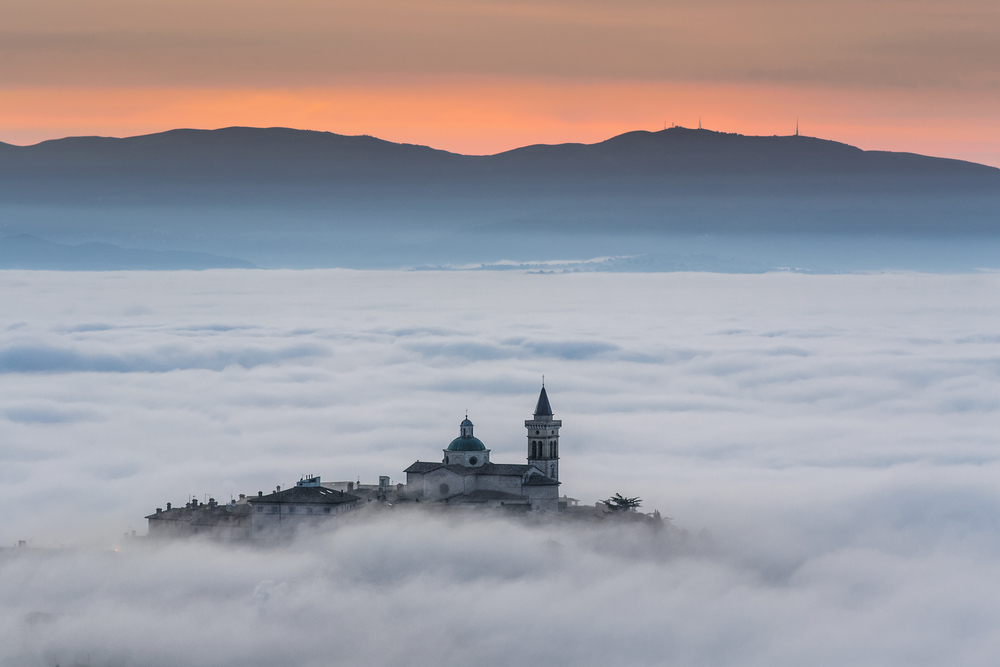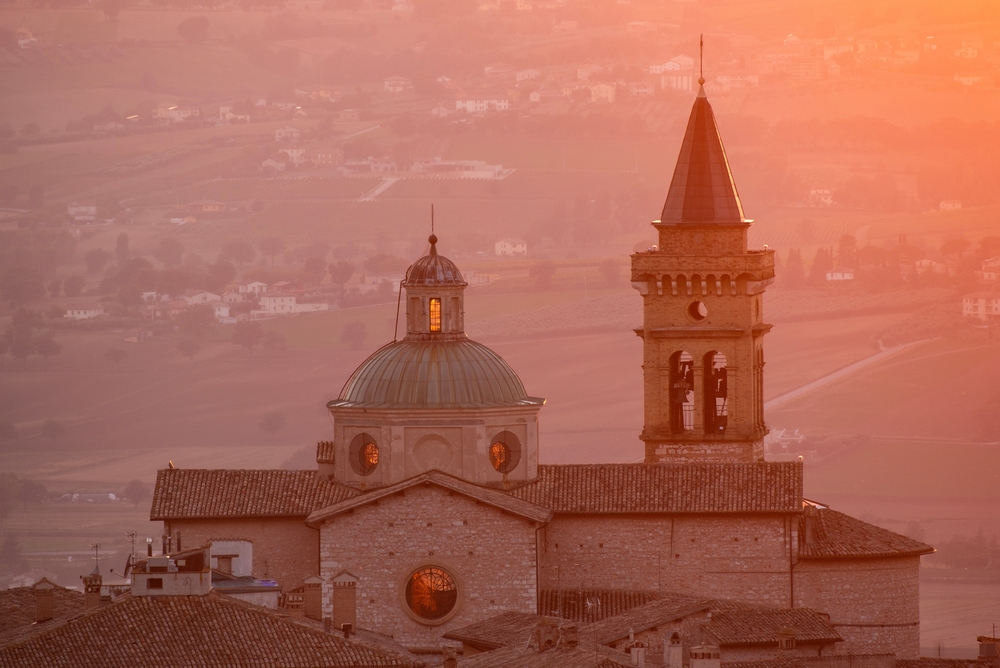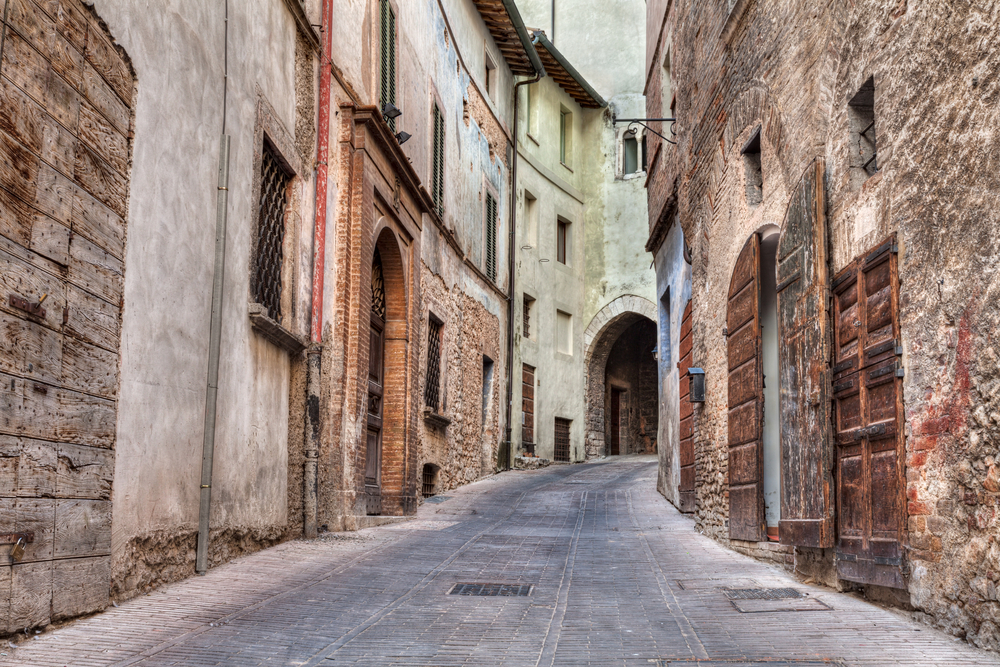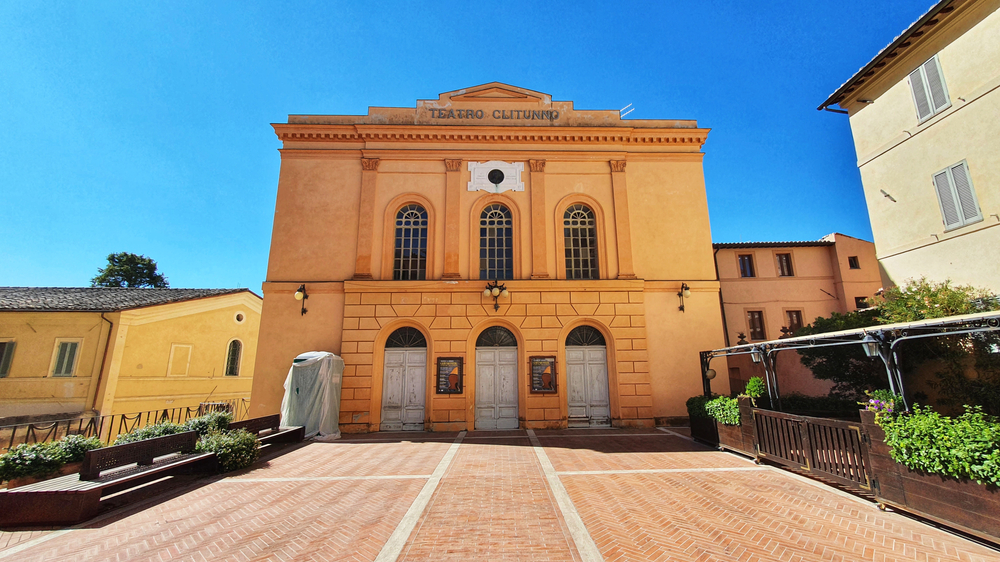Guide to Trevi, Umbria: Trevi travel guide
Trevi is a town in Umbria. Located between Foligno and Spoleto, it sits on the slopes of Mount Serano 412 metres above sea level and overlooking the beautiful Spoleto Valley.
Trevi has a rich and long history. Evidence of ancient civilisations and Umbrian tribes have been uncovered here which date back as early as 700 BC. That said, we have a much greater knowledge of its history once it was conquered by the Romans in 284 AC. During Roman control of Trevi, it was a key town situated on the Via Flaminia. The latter was an ancient Roman road. It led all the way from Rome across to Rimini on the Adriatic Coast via the Apennine Mountains. Incidentally, Trevi still boasts a spectacular view over the Via Flaminia today.
After the fall of the Roman Empire, Trevi was christianised by Bishop Emiliano. Subsequently, it was occupied by the Longobards and became part of the Duchy of Spoleto. It underwent a long period when rule kept passing from one authority to another.
During the Middle Ages, it was ruled by both Foligno and Spoleto. This period was one of both political and military instability. Generally allying itself with Perugia to defend itself from nearby Spoleto, it fought a number of wars with neighbouring communes. The results of these wars weren’t always happy. Certainly the brief rule of the Trinci warlords of Foligno in the 14th century was not a happy time for Trevi.

Trevi’s most successful period economically was arguably in the 15th century. At this stage, it was called il porto secco (the dry port). In 1470 it became the fourth town in Italy to have a printing press and this was managed by the first ever known printing company. A number of Renaissance palaces in Trevi date back to this time and are visible evidence of the wealth that this generated for the city.
In the 16th century Trevi then became part of the Papal States. By and large, it remained under Papal control until 1860 when it became part of the united Kingdom of Italy.
What to see and do in Trevi, Umbria
Trevi is divided into two parts. In the lower part, near to the Via Flaminia is the newer part – Borgo Trevi. By and large, this dates back to the 19th century. Here you will find much more modern buildings, houses and even some industrial areas. If we’re honest, it’s not an area we recommend you visit.
That said, you can see Roman remains below the town, near the Via Flaminia. Head to the Roman site of Pietrarossa where a number of Roman ruins were discovered. These include a series of Roman baths that were believed to still be in use during the time of Saint Francis. Also in this area are the Springs of Clitunno. In Roman times, these springs would have been much more impressive than they are today. Roman Emperors would have navigated by boat along the River Tiber to the River Clitunno and from there to the springs. There would also have been a small lake here, next to which the Romans built a temple to worship their god Jupiter.
However, most visitors start their visit to Trevi up the hill in the historic centre. Here, it is still possible to see evidence of Trevi’s Roman history in the 1st century BC walls that still surround the town today. Only some of the walls remain as in 1264 a newer set of walls was built outside the original ones. The city gates also date to the later Medieval period. These gates are the Porta del Bruscito, the Porta San Fabiano and the Porta del Cieco. The Arco del Monstaccio archway also dates to the Medieval period.
A good place to start your visit to Trevi is from the Piazza Garibaldi which is nestled on the outside of these walls. Park up and then explore Trevi on foot from here. The centro storico essentially sits on a flat plateau within these walls. Just inside the walls, you can also admire the tremendous views that Trevi enjoys over the surrounding countryside. From here, head along the Via Roma and you will reach the central square in Trevi – the Piazza Mazzini.
The Piazza Mazzini is the heart of the town. It’s where the town’s important events take place. But it’s also where you will find some of the town’s most important buildings – the Torre Civica with its bell tower, the Palazzo Comunale and the Palazzo del Governatore. The Palazzo Comunale dates back to the 14th century but features a Renaissance style portico. Once in this central square, there are a myriad of different streets to choose from to explore. All will take you past a plethora or sites and monuments.
For example, walk uphill from here and you will reach the Cathedrale di Sant’ Emiliano. The church dates back to the 12th century but it was renovated in the second half of the 15th century. The interior dates back to the 16th century and is in a neoclassical style. It is home to the Altar of the Sacramento by Rocca da Vicenza along with a number of 16th frescoes by Francesco Melanzio.

This isn’t the only religious building worth visiting in Trevi Umbria. Walk along the Via Francesco from the Piazza Mazzini and you will come to the Gothic Church of San Francesco which dates back to the year 1200. This houses the oldest organ in the region, installed in 1509. It also contains a wonderful painted crucifix which is in the style of Giotto (but not by Giotto himself).
The church has now been de-sanctified and forms part of town’s main museum complex. These museums include the Museo della Civilta dell’ Ulivo (Museum of Olive Civilisation) and the Pinacoteca Art Gallery. The latter contains works of art by painters such as Niccolo di Liberatore (also known as l’Alunno), Giovanni di Pietro, Lo Spagno and Pinturicchio. Don’t leave the gallery too quickly. Stop and admire the incredible views over the surrounding countryside that you can enjoy from here. This view includes a sighting of the Convent of San Martino.
Incidentally, once you have explored the historic centre of Trevi, it’s well taking a walk to this church and convent. It’s about a kilometre away along the scenic Viale Ciufelli. The complex includes a small chapel which sits in front of the main church. Inside, there are frescoes by both Tiberio d’Assisi and Lo Spagna which are well worth seeing. Another chapel within the complex also has a fresco by Mezzastris.
Back to Trevi’s museum complex, the Museo della Civilta dell’ Ulivo is the first public museum dedicated to olives and olive oil production in Europe. It takes visitors through the process by which olive oil is extracted. It also explains the different varieties of olives. In the museum, you’ll also find displays, images, equipment and information all about the centuries-old cultivation of extra virgin olive oil in the region.
Trevi remains a key place for the production of olive oil today and the town is surrounded by miles and miles of olive groves. In the nearby hamlet of Bovara, you will even find the oldest olive tree in Umbria. It stands at an impressive 9 metres high and is believed to be 1700 years old. It is referred to as the tree of Sant’ Emiliano. This is because it is believed that Sant’ Emiliano (the future patron saint of Trevi) was tied to it and martyred in 304.
Also in Trevi is the Church of the Madonna delle Lacrime. This was built at the end of the 15th century to commemorate a miracle. Inside, there is a fresco by Perugino – the Adoration of the Magi. In fact, there are around 20 churches in total in and around Trevi. Most are built in the Romanesque style but expect to see some which also incorporate Gothic and Renaissance features.
Other buildings of note are the plethora of palaces that Trevi can boast. The first of these is the 16th century Collegio Etiopico Pontificio which contains frescoes by Federico Zuccari. They also include Casa Petrucci, Palazzo Urighi and Palazzo Valenti which also date back to the 16th century. The latter was once the home of a family that held an incredible amount of power during the administration of the papal states. Also of note is the 17th century Palazzo Lucarini. The latter is home to a museum of contemporary art (Flash Art Museum). These palaces sit close to Medieval workshops in the Via Ombrosa making Trevi a fascinating place to explore.

And, of course, all these stopping points can be enjoyed with plenty of breaks at the many cafes, bars and restaurants that line Trevi’s charming cobbled streets.
What’s on in Trevi, Umbria
Every fourth Sunday of the month, Trevi hosts a farmer’s market where visitors can purchase locally grown produce and other products. There is also a flea market on the same day, perfect for those looking to pick up a more unusual souvenir from their trip.
The annual festivals in Trevi Umbria start quite early in the year. On 27 January the town celebrates the feast day of Saint Emiliano, the patron saint of Trevi. Celebrations include a night time procession of the Illuminata. During this, a statue of the saint is taken from the Duomo and paraded through the city taking a route that largely marks the original walls of the town. It has followed the same route since 1264. A procession of floats (cerei) prepared by local businesses and artisans accompany the procession.

For us though, the best time of year to visit Trevi if you want to see it at its most lively and vibrant is in October when Ottobre Trevano takes place. Throughout the month, a number of historic processions take place whilst the different boroughs within the town complete in the Palio dei Terzieri. This commemorates the way that the town emerged from the destruction of Trevi in 1214 by the people of Spoleto under the leadership of Duke Theopoldo. An extremely heavy cart is pulled along the afore-mentioned 800 metre pathway that winds its way along the outside walls of Trevi.
October also sees a fantastic antique market in the town. Expect to see locals dressed in traditional Medieval garb throughout Trevi’s squares, alleyways and courtyards. And enjoy the opportunity to catch a glimpse into what Medieval life would have been like.
If you’re a foodie, head to Trevi on the third Sunday in that month. Then, the Piazza Mazzini is the setting for the Black Celery Square. At this time, the piazza is filled with boxes overflowing with black celery. This vegetable has a dark green colour and a very intense smell. Exhibitors bring their freshly grown produce to exhibit it, hoping that they will walk away with the first prize. If celery isn’t to your tastes, then maybe you will be more tempted by the produce that the local butchers also bring to the town square on the same day. The Sausage Fair is a chance to sample and purchase the delicious meat products that they bring.
How to travel to Trevi, Umbria
By train: There is a train station in Trevi but visitors should be aware that this is at the bottom of the hill. It’s a long and steep climb from here to the historic centre. There are occasional buses from here to the centre but these aren’t frequent and they only run on weekdays.
By car: It is easy to travel to Trevi by car and, once there, visitors will find ample parking.
By bus: There are regular buses from other nearby towns to Trevi. Buses conveniently stop at the Piazza Garibaldi.
Check out public transport options from your location to Trevi at Omio. Just enter your dates, departure and arrival destinations and it will allow you to compare the different bus and train routes available as well as enable you to easily book tickets.


